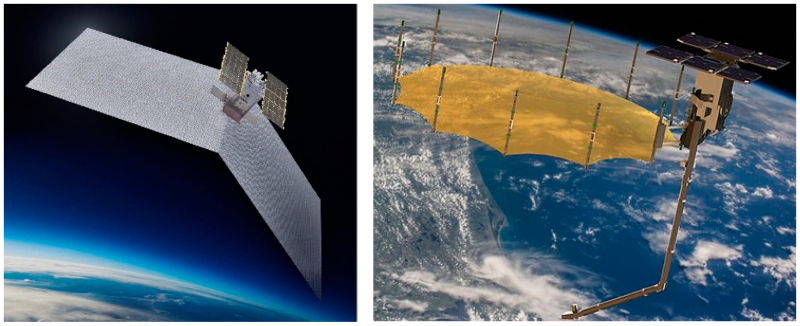Advancements in Synthetic Aperture Radar (SAR) Technology: Unveiling Earth's Secrets from the Sky
Synthetic Aperture Radar (SAR) technology has revolutionized our ability to observe and study the Earth's surface from a bird's-eye view. Unlike traditional optical remote sensing, SAR operates on the principle of microwave radar, allowing it to capture images regardless of weather conditions or time of day. In this blog, we will delve into the advancements in SAR technology and its applications, unlocking the potential for unprecedented Earth observation and understanding.
1. How SAR Works
Synthetic Aperture Radar is a remote sensing technique that uses microwave pulses to illuminate the Earth's surface. The radar signal bounces off the objects and terrain on the ground and returns to the satellite's sensor. By measuring the time it takes for the signal to travel back, SAR creates detailed images of the Earth's surface. What sets SAR apart from traditional optical sensors is its ability to penetrate clouds, vegetation, and even the Earth's surface to reveal hidden features.
On the basis of product type, the global Synthetic Aperture Radar (SAR) Market is classified into: Space based SAR, Air based SAR. Synthetic Aperture Radar (SAR) works by utilizing radio waves to create detailed images of the Earth's surface.
2. High-Resolution Imaging
Recent advancements in SAR technology have significantly improved the resolution of the images it produces. High-resolution SAR images now offer detailed views of the Earth's surface, allowing scientists and researchers to study features as small as a few meters. This enhanced resolution opens up new possibilities for various applications, from monitoring urban areas' growth to tracking changes in fragile ecosystems.
3. 3D Mapping with Interferometry
SAR interferometry, also known as InSAR, is another remarkable application of SAR technology. InSAR utilizes two or more SAR images of the same area taken at different times to measure the ground's surface movement with exceptional precision. This technique has proven invaluable in monitoring tectonic plate movements, detecting ground subsidence caused by mining or groundwater extraction, and even monitoring the stability of infrastructure such as bridges and dams.
4. Environmental Monitoring and Disaster Management
Synthetic Aperture Radar (SAR) ability to penetrate clouds and darkness makes it particularly useful for environmental monitoring and disaster management. It can assess deforestation, monitor agricultural activities, and track changes in wetlands and coastlines. In the event of natural disasters like earthquakes, floods, or oil spills, SAR plays a crucial role in assessing the extent of damage and aiding relief efforts.
5. Polarimetric SAR (PolSAR)
Polarimetric SAR (PolSAR) is an advanced SAR technique that measures the polarization of radar signals. PolSAR provides additional information about the scattering properties of objects and terrain on the Earth's surface. This enables scientists to discriminate between different types of land covers, identify changes in vegetation, and even detect man-made structures with high accuracy.
6. Spaceborne and Airborne SAR
SAR technology is deployed in both spaceborne and airborne platforms. Spaceborne SAR satellites, like Sentinel-1 and RADARSAT, provide global coverage and repeat pass capabilities, making them ideal for large-scale monitoring. On the other hand, airborne SAR systems, mounted on aircraft, offer higher resolution and flexibility for specific regional or localized studies.
7. Future Prospects
As SAR technology continues to evolve, the future prospects for Earth observation are promising. Enhanced resolution, advanced data processing techniques, and the integration of SAR with other remote sensing technologies hold the potential to transform how we study and understand our planet. From environmental conservation to disaster management and beyond, Synthetic Aperture Radar is paving the way for a more sustainable and informed future.
